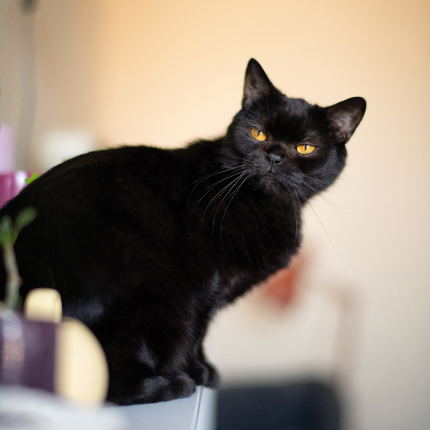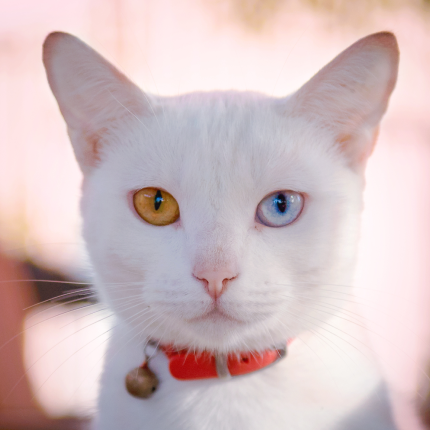10 Fascinating Facts About Black Cats

Despite their enigmatic aura and historical associations with superstitions, black cats have much more to offer than just being subject to myths. From their roles in maritime history to their striking genetics, black cats are much more than the stereotypes that often surround them. Let’s delve into some intriguing facts highlighting why these feline beauties deserve a special place in our hearts.
1. A Diverse Range of Black Cat Breeds
When we think of black cats, the image of a sleek, shiny feline often comes to mind. However, the Cat Fanciers’ Association (CFA) recognizes 22 different breeds that can feature a solid coat. While the Bombay breed is typically associated with the iconic black cat look, other breeds like the Norwegian Forest Cat, Japanese Bobtail, and Scottish Fold can also sport this color. The Bombay was inspired by the elegant appearance of panthers, a vision brought to life in the 1950s by Nikki Horner.
2. Adoption Rates
Contrary to the belief that black cats face difficulties finding homes, they are adopted at similar rates to cats of other colors. Although they have historically been euthanized at higher rates, the ASPCA’s data reveals that the number of black cat adoptions is also high. This might be because black cats are more prevalent in shelters, although the lingering myth of bad luck can sometimes make their adoption process longer.
3. Halloween and Black Cats
You might expect black cat adoptions to spike around Halloween due to their spooky associations, but the opposite is often true. Concerns over the potential misuse of black cats around this time have led some shelters to restrict their adoption during October. This precaution ensures that they are not seen as mere Halloween props but as cherished pets.
4. The “Rusty” Black Cat
Black cats sometimes appear to have a rusty or brownish tint, especially if exposed to excessive sunlight. This color change is due to the genetic interaction between the black fur gene and the tabby stripe gene. Nutritional deficiencies can also play a role in this phenomenon. What was once a sleek black coat can reveal hidden stripes under certain conditions.
5. Patterns on Black Cats and Panthers
If you observe a black cat in sunlight, you might notice subtle patterns in their fur. This trait is shared with black panthers—melanistic jaguars or leopards. These big cats also have underlying patterns that become visible under the right light. This effect is due to an excess of melanin, which also affects the fur color of domestic cats.
6. Maritime History
Historically, sailors have considered black cats to be good luck. They were welcomed aboard ships to help control mice populations and were believed to ensure a safe voyage. Tiddles, a famous ship cat, traveled over 30,000 miles with the Royal Navy and became a beloved figure among sailors.
7. Potential Disease Resistance
Interestingly, the gene responsible for black fur in cats may offer more than just a striking appearance. It is related to genes that give humans resistance to diseases like HIV. Some scientists speculate that the black fur mutation could be linked to disease resistance, opening new avenues for research into feline and human health.
8. Cat Cafés
You can visit Nekobiyaka, a café dedicated to black cats in Himeji, Japan. This unique venue allows visitors to enjoy the company of these elegant felines while adhering to the policy of not picking them up. Each cat wears a different colored bandana to prevent mix-ups, ensuring guests enjoy a delightful experience.
9. The Challenge of Photographing Black Cats
Photographing black cats can be tricky due to their dark fur blending into backgrounds. To capture their beauty, use minimalist backgrounds and natural lighting. If you’re using a smartphone, adjust the exposure by tapping your cat’s face and brightening the photo with the sun icon.
10. Cultural Beliefs
While black cats are often associated with bad luck in some cultures, many view them positively. In Japan, a black cat is believed to attract suitors for single women. A black cat crossing your path from left to right is considered a good omen in Germany. In Scotland, a black cat’s visit to your home is said to bring prosperity, and in France, encountering one at a crossroads is believed to lead you to treasure.
Black cats are fascinating creatures that defy simple superstitions. Whether as symbols of good luck or subjects of scientific intrigue, they hold a special place in our world. Their unique traits and rich history remind us there is much more to these elegant felines than meets the eye.

Featured Articles

Why Do Cats Roll Over Into Their Backs But Not Let You Touch Their Bellies?
It’s common knowledge dogs love to have their tummies rubbed when they freely lay down before you and roll onto their backs. But, if you’re also familiar with cats, you know that when they roll onto their backs with their bellies exposed, rubbing the belly will most likely result in…

Polydactyl Cats: Just More Beans to Love
Polydactyl cats have become extremely popular in recent times. As a result, more and more people are interested in learning more about this six-toed cat and want to get one of their own. If you are a cat lover intrigued by polydactyl cats, you have come to the right place….

The Odd-Eyed Cat (AKA Heterochromia)
Cats are already beautiful and fascinating creatures, but people are bound to take notice when they have something as captivating as two different colored eyes. Odd-eyed cats always have one blue eye paired with either a green, yellow, or brown eye. This form of heterochromia occurs in other animals, including…